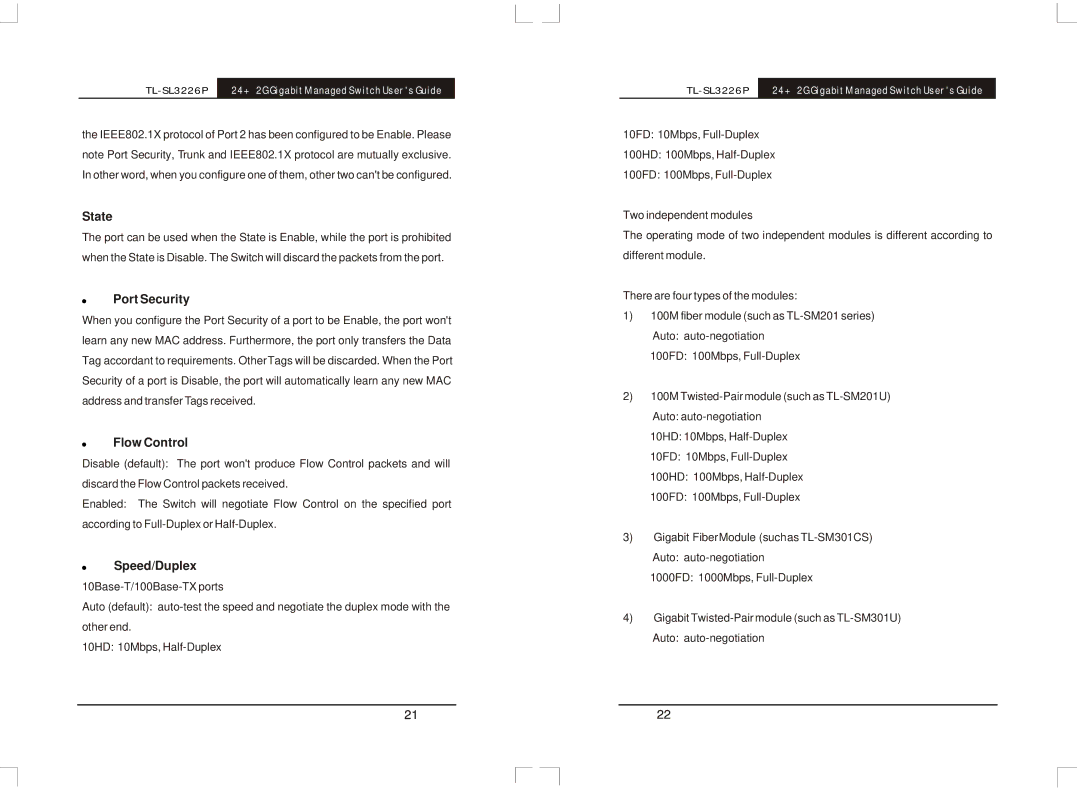
24+2G Gigabit Managed Switch User's Guide |
the IEEE802.1X protocol of Port 2 has been configured to be Enable. Please note Port Security, Trunk and IEEE802.1X protocol are mutually exclusive. In other word, when you configure one of them, other two can't be configured.
State
The port can be used when the State is Enable, while the port is prohibited when the State is Disable. The Switch will discard the packets from the port.
!Port Security
When you configure the Port Security of a port to be Enable, the port won't learn any new MAC address. Furthermore, the port only transfers the Data Tag accordant to requirements. OtherTags will be discarded. When the Port Security of a port is Disable, the port will automatically learn any new MAC address and transfer Tags received.
!Flow Control
Disable (default): The port won't produce Flow Control packets and will discard the Flow Control packets received.
Enabled: The Switch will negotiate Flow Control on the specified port according to
!Speed/Duplex
Auto (default):
other end.
10HD: 10Mbps,
24+2G Gigabit Managed Switch User's Guide |
10FD: 10Mbps,
100HD: 100Mbps,
100FD: 100Mbps,
Two independent modules
The operating mode of two independent modules is different according to different module.
There are four types of the modules:
1)100M fiber module (such as
Auto:
2)100M
10HD: 10Mbps,
10FD: 10Mbps,
100HD: 100Mbps,
100FD: 100Mbps,
3)Gigabit FiberModule (suchas
Auto:
1000FD: 1000Mbps,
4)Gigabit
